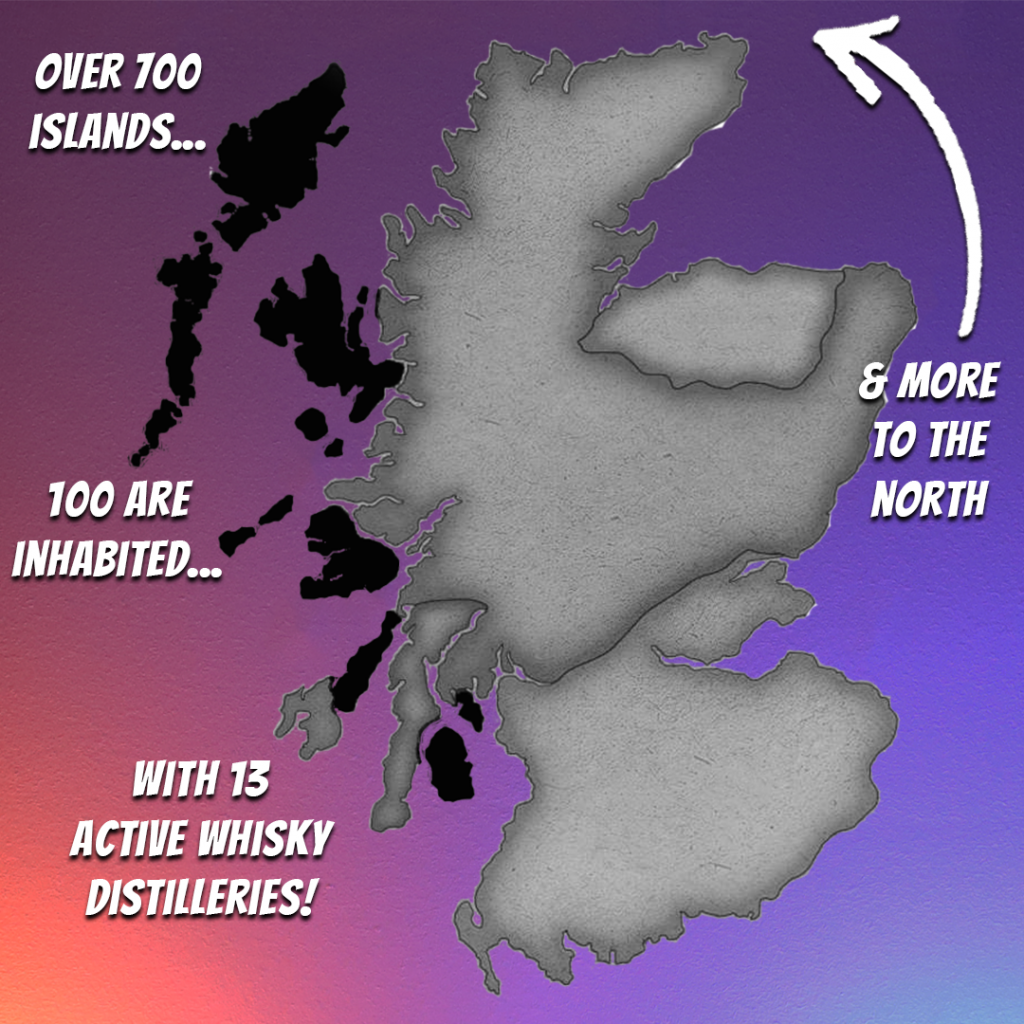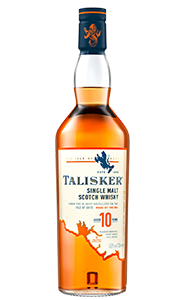When you hear whisky enthusiasts discuss Scotland’s whisky regions, you’ll often hear five names repeated: Lowlands, Highlands, Speyside, Campbeltown, and Islay. That’s the official line from the Scotch Whisky Association (SWA). But many whisky lovers – myself included – believe there should be a sixth: the Islands.
These scattered, sea-battered lands produce whiskies that can be dramatically different from those of the Highlands, to which they’re currently grouped. From briny coastal drams to sweet, nutty malts and aromatic peat expressions, the Islands offer remarkable variety and distinctive character that deserves its own place on Scotland’s whisky map.
Why Aren’t the Islands an Official Region?
The reason is mostly tradition. The SWA has always classified these distilleries under the Highlands umbrella, despite the fact that they are separated by miles of stormy seas and shaped by very different climates.
Scotland boasts over 700 islands, with around 100 inhabited. Of these, 13 currently host active whisky distilleries (excluding Islay, which is already an official region). That’s more than Campbeltown, more than the Lowlands, and even more than some Highland subregions. By numbers alone, the Islands could easily justify their own category.
There’s also precedent for change: Speyside only became its own official region in 2009. But for now, without a strong push from the industry, the Islands remain unofficial.
Geography and Flavour Influence
Grouping the Islands together can be tricky – each has its own geography, microclimate, and traditions. As a result, their whiskies can vary widely in style. One thing they share, however, is a strong sense of place. Many have briny, salty notes thanks to casks ageing just metres from the sea. Peat is also common, though the style differs from Islay‘s medicinal smoke or the mainland Highlands’ dry, peppery peat.

- Orkney: Treeless and windswept, Orkney’s peat is made mostly from heather, lending an aromatic, herbal quality to whiskies such as those from Highland Park.
- Jura: Known for sweet, nutty whiskies often aged in sherry casks, creating a balance of fruitiness, gentle spice, and maritime influence.
- Skye: Talisker is famed for its peppery smoke and bold, coastal character, while newcomer Torabhaig brings floral and honeyed peat to the table.
If a whisky’s flavour profile doesn’t seem to fit the Highlands, Lowlands, or Islay, it might just be an island dram.
Distilleries of the Islands
From north to south, the Islands’ distilleries include:
- Lerwick (Shetland) – A newcomer releasing blended whiskies while laying down stocks for future single malts.
- Highland Park & Scapa (Orkney) – The former blends subtle medicinal peat with honeyed sweetness; the latter offers smooth, unpeated maritime malts.
- Abhainn Dearg (Lewis) – Robust, oily whiskies with green fruit, spice, and distinctive peat character.
- Isle of Harris – Balances sweet and smoky notes with heather, green apple, and sea spray.
- Benbecula – Yet to release an aged whisky, but promising a classic marine style.
- Isle of Raasay – Light peat, dark fruit, and peppery spice.
- Talisker & Torabhaig (Skye) – Respectively bold and peppery, and gently peated with floral tones.
- Tobermory/Ledaig (Mull) – Tobermory for unpeated fruit and spice; Ledaig for smoky, medicinal peat with salty depth.
- Jura – Sweet, nutty malts balanced by subtle smoke.
- Arran & Lagg (Arran) – Arran’s orchard fruits contrast with Machrie Moor’s peated expressions; Lagg focuses on bold, smoky drams.
Recommended Whisky: Talisker 10

For a dram that captures the essence of the Islands, it’s hard to go past Talisker 10. Bold, maritime, and unmistakably shaped by its location, it offers:
- Nose: Peppery smoke, orchard fruit, and salty maritime notes.
- Palate: Briny malt, biscuity sweetness, and citrus balance.
- Finish: Lingering campfire smoke with a touch of sugar.
It’s an accessible and widely available example of Island whisky’s unique personality.
The Final Word
Whether or not the Islands ever become an official whisky region, their diversity and distinctiveness are undeniable. Each dram tells the story of its island home – the sea air, the peat, the weather, and the traditions of the people who make it.
For the whisky explorer, the Islands offer some of the most intriguing and rewarding adventures in Scotland. Official region or not, they hold a firm place in the hearts (and glasses) of whisky lovers everywhere.

